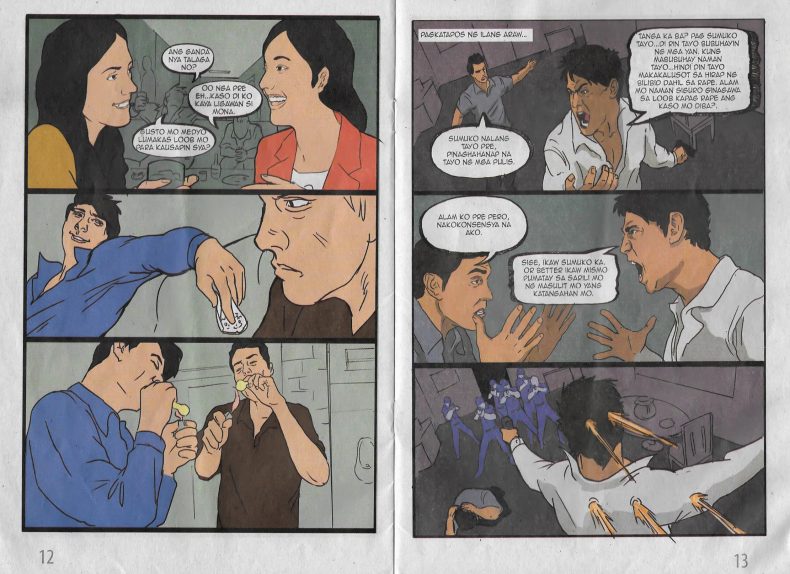We are pleased to release this month’s issue on ‘Top IS Militants in Southeast Asia’.
For a complete copy of the report go to the following URL:
https://www.rsis.edu.sg/wp-content/uploads/2014/07/CTTA-November-2016.pdf
A new batch of radical jihadist leaders and key operatives has emerged in Southeast Asia, replacing a number of the Al Qaeda-linked Jemaah Islamiyah (JI) old guard who have been killed (e.g. Azahari Husin and Noordin Top), executed (e.g. Imam Samudra and Ali Ghufron) or incarcerated (e.g. Abu Bakar Bashir and Hambali). Five of the new leaders have achieved some prominence in recent years because of their jihadist activities: Bahrumsyah, Bahrun Naim and Gigih Rahmat Dewa from Indonesia, and Muhammad Wanndy and Isnilon Hapilon from Malaysia and the Philippines, respectively. They have pledged their allegiance to Abu Bakr al-Baghdadi, leader of the so-called Islamic State (IS), and represent the ‘fresh face’ of violent extremism in the region. Their emergence attests to jihadists’ ability at regeneration and leadership succession.
Unlike previous Southeast Asian jihadist leaders, a few of the present leaders like Bahrumsyah, Bahrun Naim and Wanndy run terror cells from overseas in Iraq and Syria. This poses a security challenge for governments in the region. While in the past they could eliminate or neutralise the top leaders operating in Southeast Asia, now they have to contend with cell leaders who operate from overseas with impunity, issuing instructions and directives, transferring funds, and facilitating travel for jihadists. Constraining them presents a huge challenge given the ease of communications via social media.
The five leaders featured in this issue are not spiritual and ideological leaders like Abdullah Sungkar (deceased) and Abu Bakar Bashir of Jemaah Islamiyah, but strategists and tacticians like Azahari Hussin and Noordin Top who masterminded terrorist operations. This partly explains why no wali (governor) has been appointed for IS enclaves in Indonesia and the Philippines. Only Hapilon has been appointed as the emir for IS Philippines. A potential emir in Indonesia, Santoso, was killed in July 2016 before he could be appointed.
Together with a few others, the five jihadi leaders have contributed to raising the threat level in Southeast Asia, as evidenced by the attacks, and discovery of terror plots and cells in the region. Militants mounted attacks in Jakarta in January, Puchong (Malaysia) in June and Solo (Indonesia) in July. In August, an IS suicide bomber attempted to kill a Catholic priest and his Church congregation in Medan (Sumatra). In the same month, militants plotting to stage a rocket attack against Singapore’s Marina Bay were arrested, and in October, three policemen were injured in a knife attack in Tangerang, near Jakarta. On 26 November, IS-linked militants in Indonesia were arrested for plotting to launch bomb attacks against the Myanmar Embassy, Parliament, the National Police Headquarters and several television stations. In the Philippines, a bomb exploded in Davao city in September while kidnappings for ransom and clashes with the armed forces have persisted. More than 400 militants have been arrested in the region. Clearly, there is an urgent need to identify and neutralise the principal leaders and members of terrorist cells and disrupt their plots in the region.
One of these militant leaders is Bahrumsyah, a key Indonesian jihadi leader appointed by al-Baghdadi as leader of IS’ Southeast Asia battalion, Katibah Nusantara, in Iraq and Syria. Jasminder Singh delves into Bahrumsyah’s background and the involvement of his combat unit in various military operations and training, manufacturing of improvised explosive devices, sniping and ideological propagation. Bahrumsyah and his battle-hardened and well-trained fighters might return to the region when IS falls in Iraq and Syria and this would have serious security implications for Southeast Asia.
Another emerging Indonesian militant is Bahrun Naim who has plotted several terrorist attacks in Indonesia. Muh Taufiqurrohman and Ardi Putra Prasetya explain Bahrun’s journey towards radicalisation, his vast networks in the jihadist community, his prominence in the cyber domain, and his quest for recognition from IS Central and the jihadi community by orchestrating terror attacks in Indonesia.
V.Arianti sheds light on one of Bahrun Naim’s subordinates, Gigih Rahmat Dewa who achieved notoriety for plotting to mount a rocket attack against Singapore’s Marina Bay. Leader of a terror cell in Batam, an island south of Singapore, Gigih also facilitated the arrival of Uighurs into Batam and aided the migration of Indonesians to Syria.
In Malaysia, Muhammad Wanndy Mohamed Jedi has emerged as a high-profile online ‘celebrity’ for IS sympathisers. He was behind the June 2016 Puchong grenade attack that occurred along with other IS-directed and IS-inspired ‘Ramadan’ attacks in several countries. Muhammad Haziq bin Jani examines Wanndy’s rise as a jihadist, his network of cells, and his threats to kill high-ranking security officials.
Another significant militant leader is Isnilon Hapilon who has been appointed emir of IS Philippines with the support of 16 militant groups in the archipelago. Hapilon is leader of the Abu Sayyaf Group faction that defected to IS in July 2014. Angelica Barangan Habulan cautions that an IS enclave in the Sulu Archipelago presents a security threat not only to the Philippines but also to Southeast Asia.
The terror attacks in Southeast Asia should be seen against the backdrop of more devastating suicide bombings and shootings in Paris, Brussels, Istanbul, Dhaka and elsewhere, resulting in thousands of casualties. In the months ahead, IS is likely to transform itself from a caliphate-building entity to a terrorist operations-based movement when it is fully routed in Iraq and Syria. This change is highlighted by Mohammed Sinan Siyech in his article which explains in some detail how IS has sowed the seeds of its own destruction. The group’s self-defeating ideology of perpetual conflict and acts of savagery makes it a dangerous movement that has to be degraded and destroyed.
http://www.rsis.edu.sg/rsis-publication/icpvtr/counter-terrorist-trends-and-analysis-ctta-volume-8-issue-11/#.WGh5izF-vIU






























